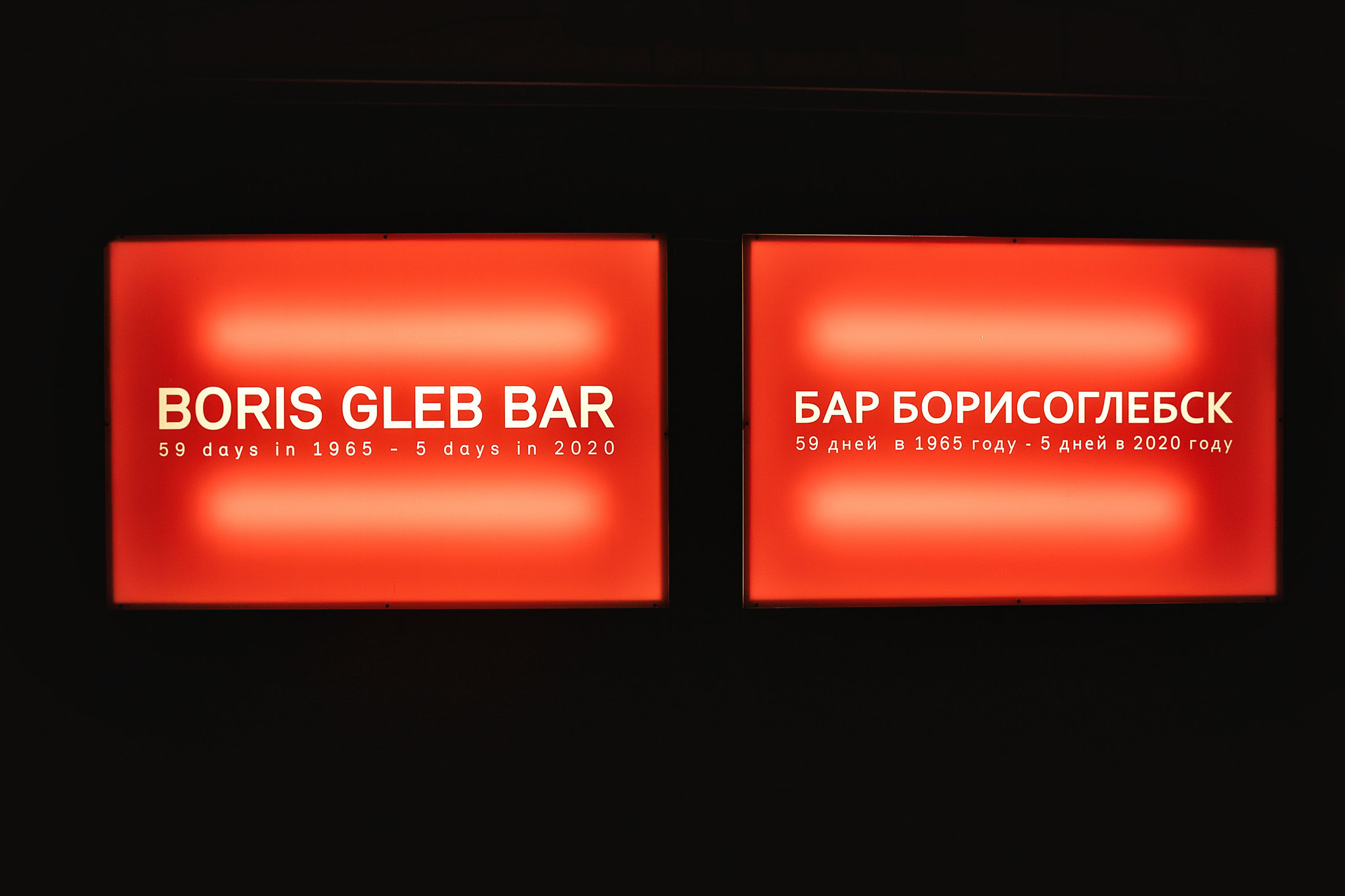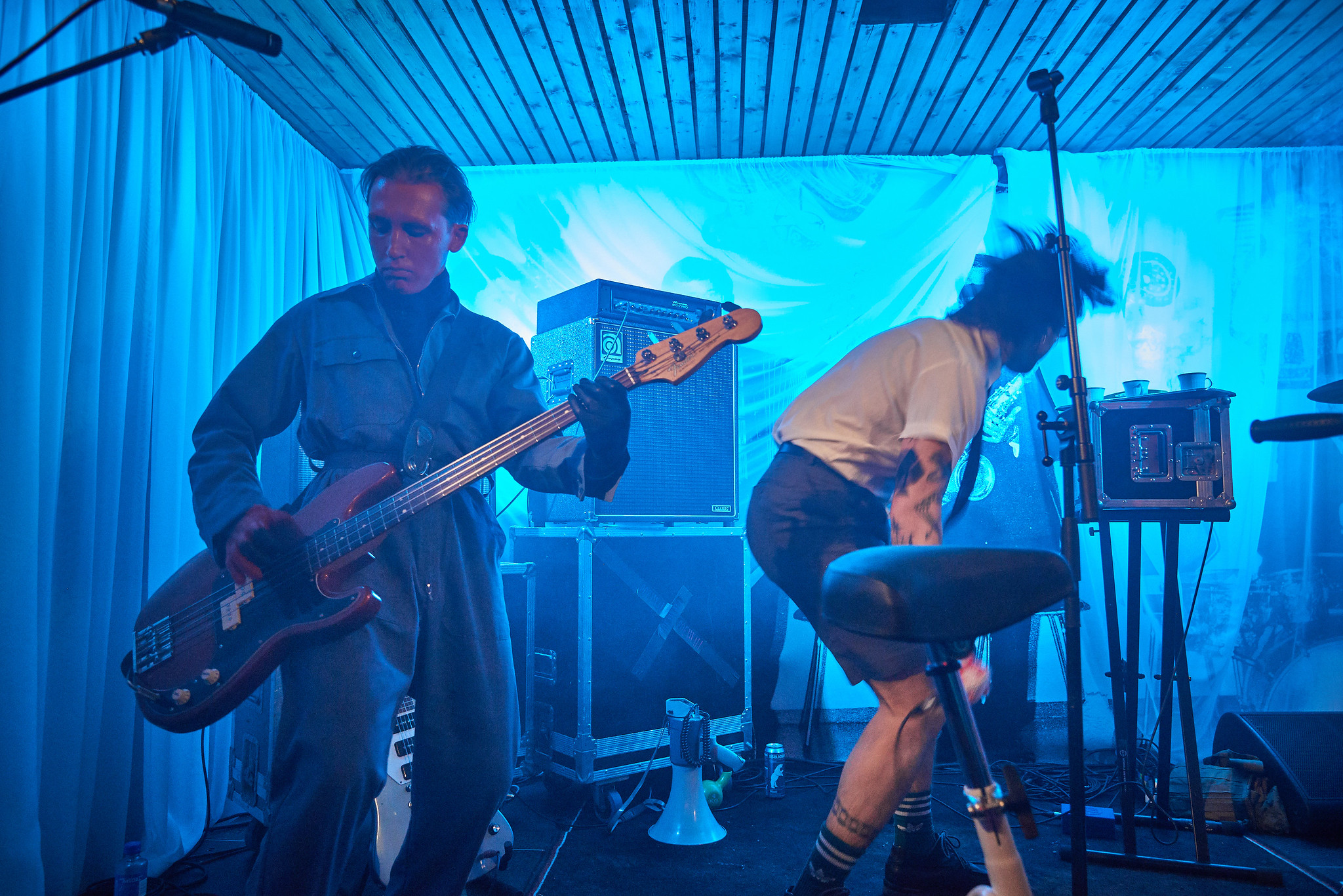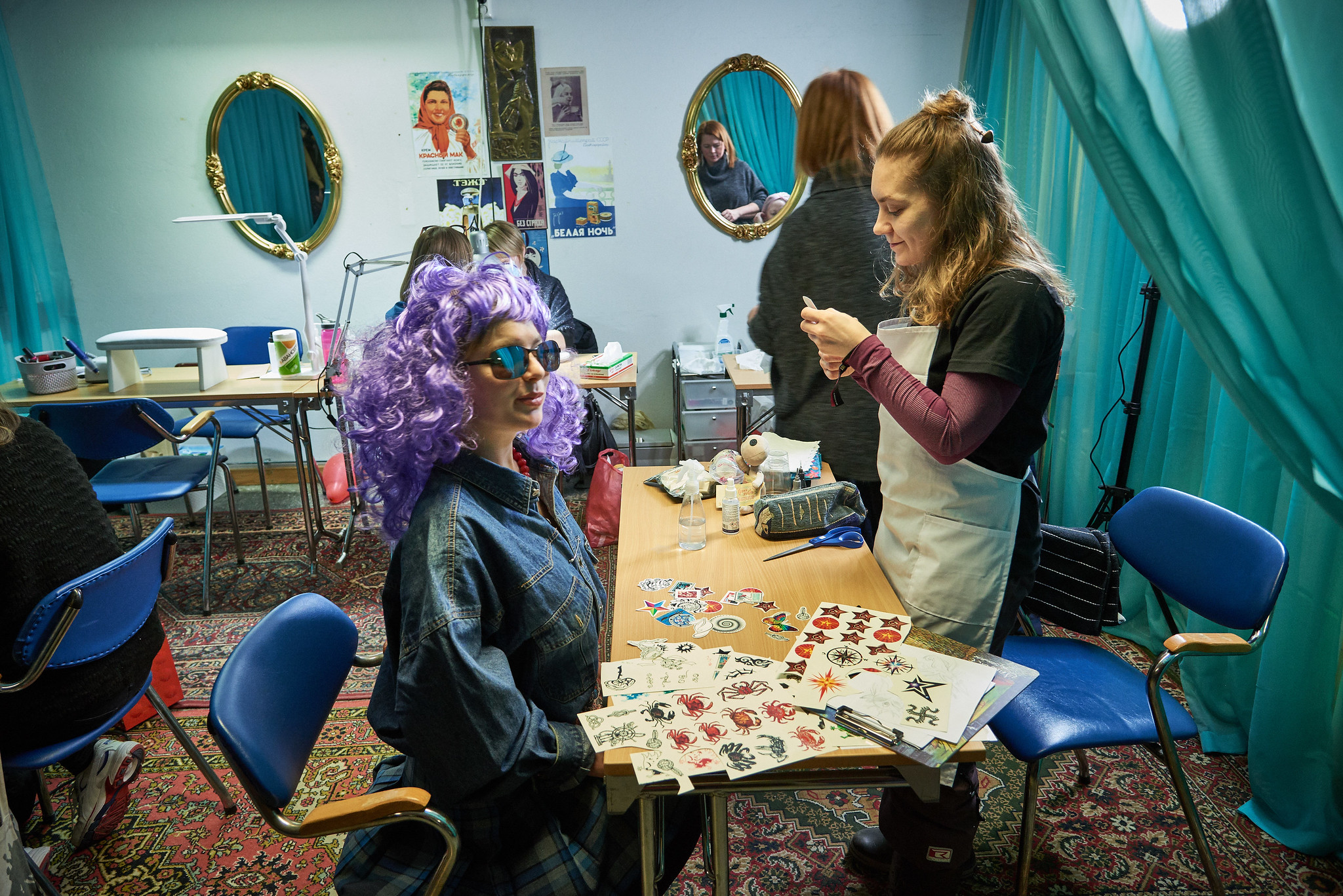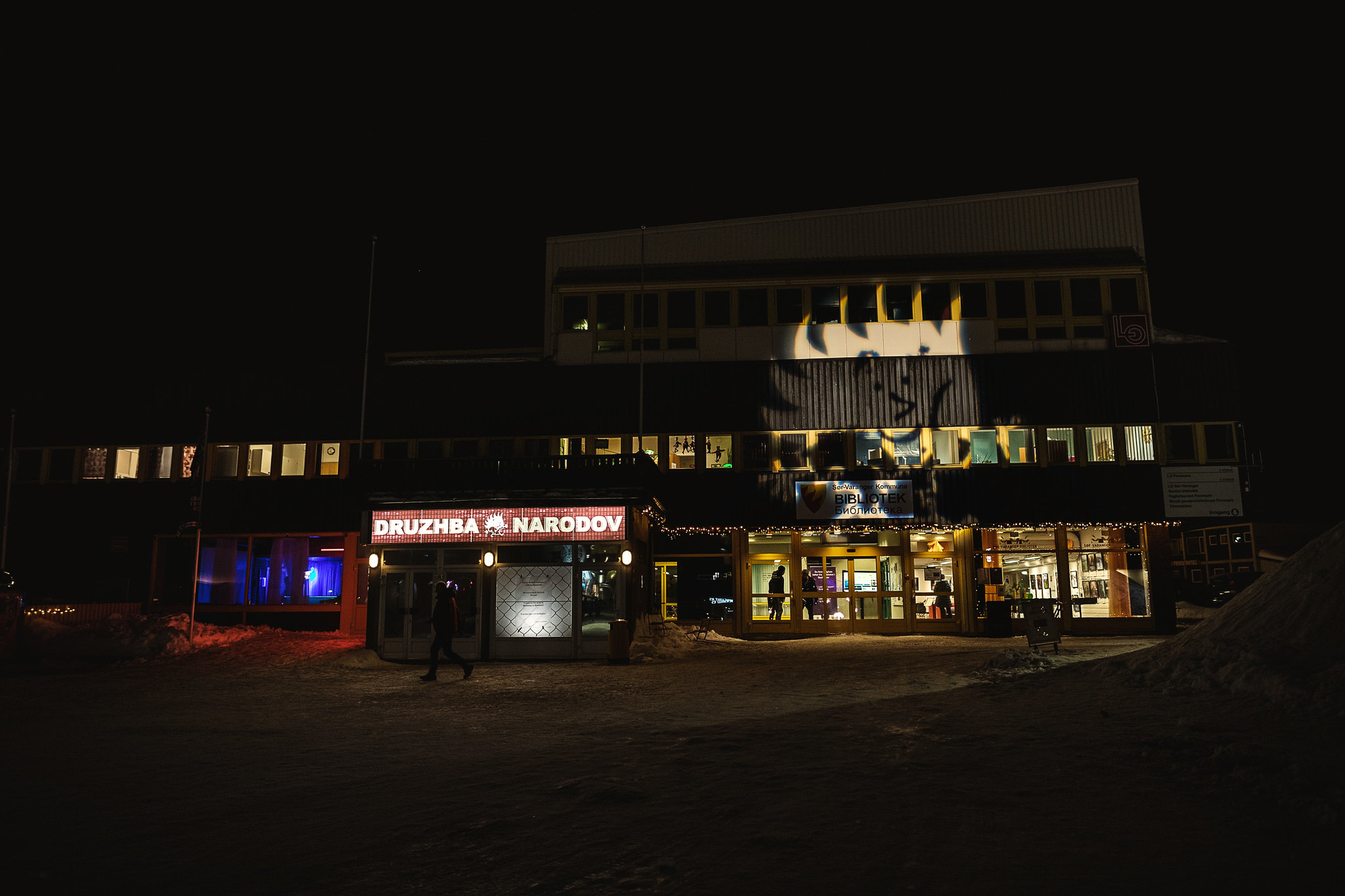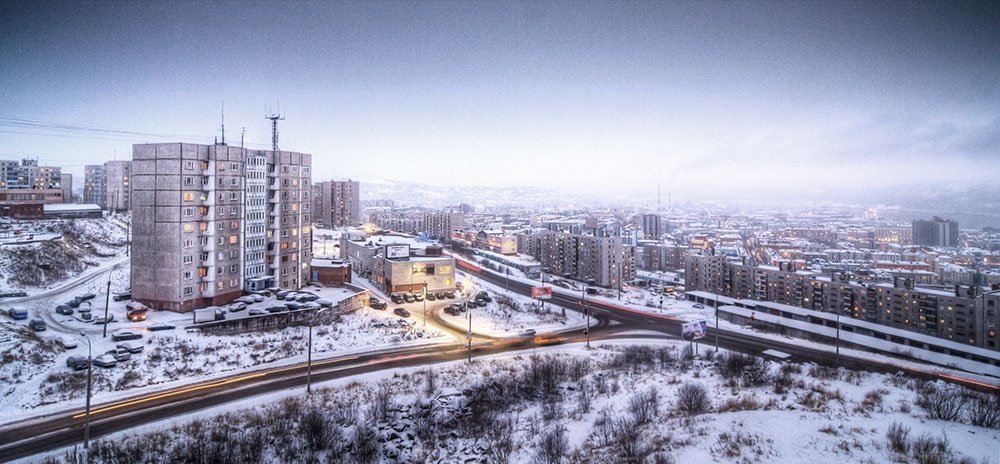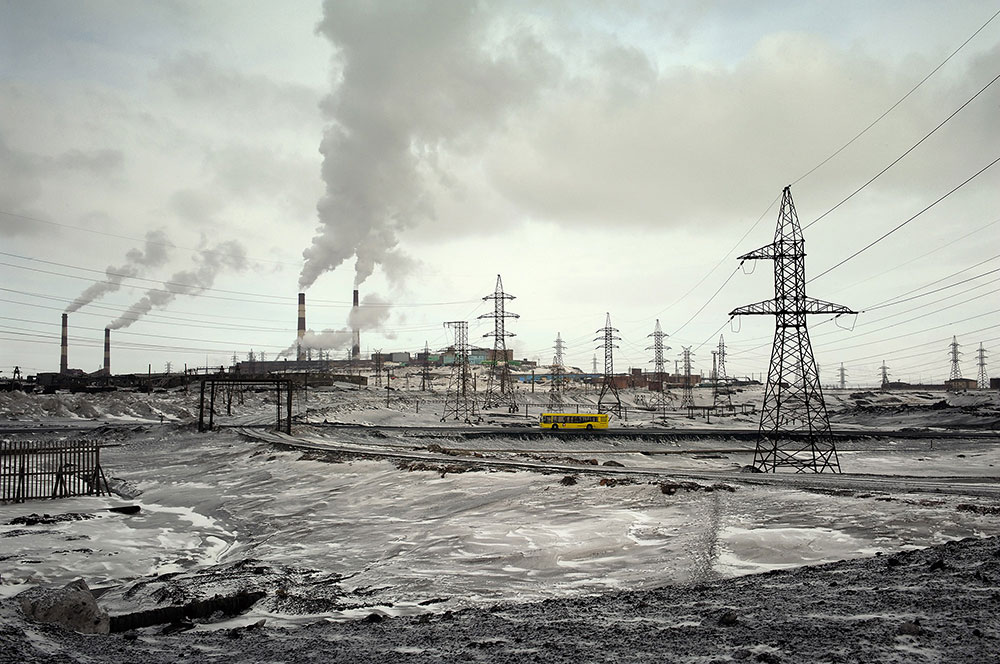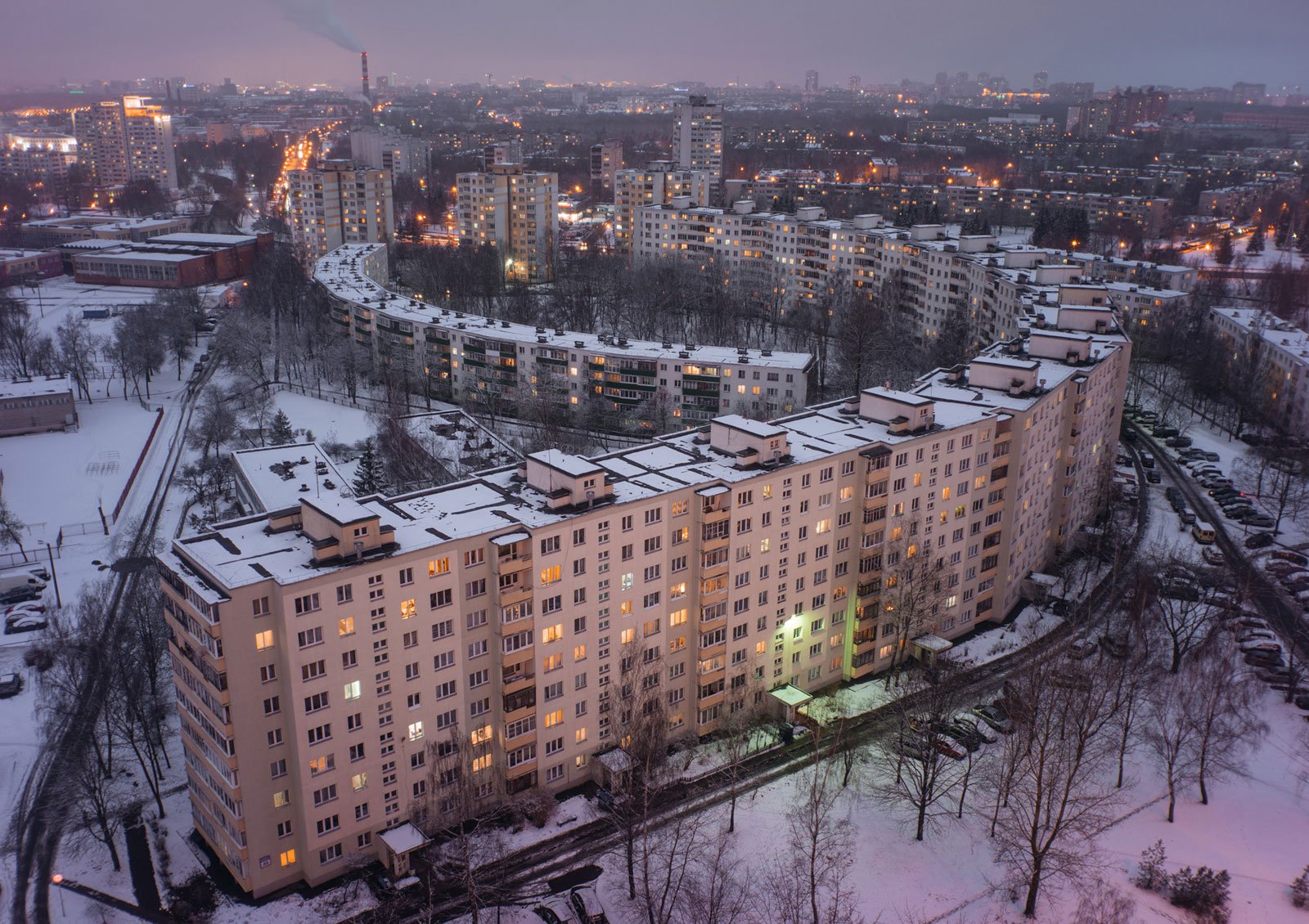Letter from Boris Gleb: Owen Hatherley uncovers the peculiar history of a Soviet enclave in Norway
Just a few kilometres from the Russian border, the Norwegian town of Kirkenes lies further east than St Petersburg. After spending a few days at Barents Spektakel, a cultural festival held there every February, Owen Hatherley crosses into Nikel, where wooden cottages and coastal vistas make way for socialist apartment blocks and polluted skies.
For a few weeks in 1965, you could enter Soviet Russia from Norway, visa-free. The border was opened temporarily at Boris Gleb, a Soviet-governed enclave on the west side of the Pasvik river.
Consisting almost entirely of a small Russian church and the Monastery of St Boris and St Gleb, the enclave — also known as Borisoglebsky — is the result of a geopolitical accident. When the border between the Russian Empire and Sweden (which, at the time, ruled Norway) was settled in 1826, the religious outpost simply found itself on the wrong side of the line. A small kink was made along the border in a bid to bring the church back where it belonged. Now, the town is roughly equidistant between Kirkenes, in Norway’s Finnmark Region, and Nikel, in Russia’s Murmansk Oblast.
Looking at the pretty houses sloping down the hills, I wondered if I was looking at somewhere that would one day become an Arctic metropolis
Well over a century later, and the town’s location made it perfect for an experiment in Cold War détente. In 1965, Boris Gleb hosted a miniature showcase of the Soviet Union and its achievements, comprising an art exhibition, a cinema, and regular tours of a nearby electric power station in English and Norwegian. Crucially, given Norway’s strict regulation of alcohol, it also provided a cheap bar. Thousands of people had crossed the border by the time Norway forcibly closed down the experiment, after lasting a total of 59 days.
But the Boris Gleb experiment was certainly not forgotten. This year, a miniature revival of the project was created at the heart of the 2020 Barents Spektakel, an arts festival held every February in the Norwegian town of Kirkenes. With the border checks still thoroughly in place (and, in fact, considerably tightened since the annexation of Crimea in 2014 and increased tensions between Russia and NATO) there was no way the enclave itself could be used. Instead, it was recreated at the central Samfundshuset, a Scando-modernist house of culture, with a revised programme offering book discussions, Russian and Norwegian music, and Soviet cartoons, along with the vodka.
Alt Går Bra performance. Image: Michael Miller
The Russian language seemed to be spoken almost as much as Norwegian in Kirkenes, which has bilingual street signs and a 10 per cent Russian population. This border has been at the heart of controversies over spies and refugees over the last few years, but at least judging by the Spektakel, the Friendship of Nations is alive and well at Boris Gleb. This year, the theme uniting the talks, concerts, and exhibitions was “the Russian Connection” (named so after The French Connection), according to curator Luba Kuzovnikova, of the Kirkenes arts organisation Pikene på Broen (meaning: “the Girls on the Bridge”).
Kirkenes is an industrial town, based on iron ore mining instigated in the early 20th century, which made it a stronghold of the Norwegian Labour Party (who still govern the region), and for a time, the country’s Communist Party. The long, low steel and concrete structures of the mine’s refineries and the shipyards are still permanently visible on a high ridge above the little wooden houses of the town. In 1905, the nascent labour movement in Kirkenes welcomed refugees from the violent suppression of the “first Russian revolution” that year. The first miners’ union, Nordens Klippe, was founded a year later; in 1907, at the town’s first Mayday march, a banner was carried reading “Down With the Throne, the Altar, and the Reign of Money”, which led to official complaints by Norway’s Ministry of Justice and its King. Much of this was facilitated by the writer, translator, and photographer Elisif Wessel. She had come up with the inflammatory slogan, sheltered Russian socialist refugees, and edited a local socialist paper, Class Against Class. The main street in Kirkenes is still named after her.
It is hard now to see this delightful, comfortable town of snowy hills, brightly painted wooden houses and views across the fjord as a heartland of bitter class struggle, until you realise that that struggle is the reason it came to be so comfortable in the first place. The abundant welfare state that still very much exists here was hard won. An open-air exhibition of Wessel’s photographs is a reminder of the harsh, inhospitable town it once was.
Image: Owen Hatherley
In the Boris Gleb 2.0 cafe, Alt Går Bra’s newly stitched versions of the old union banners are displayed alongside banners interpreting the socialist history of Kirkenes and the very different socialist history across the border. They provided a backdrop to the festivities such as all-night techno parties, and a concert of Brecht/Weill numbers by the Norwegian singer Tora Augestad, accompanied by St Petersburg’s Alexander Nevsky choir.
All the events, which included various talks — particularly one on northern Russian cooking by American writer Darra Goldstein — were packed full of locals, from both sides of the border, which is unusual for a festival of this kind. At the Transborder Cafe, talks and panel discussions, which ostensibly focused on fake news, surveillance, and “the Russian trace in the west”, anything socialist, anti-American, pro-Soviet, or pro-Russian would get a cheer. Audience responses were decidedly anti-NATO, often on a very local level. At one talk, a person had complained of the fact that you could no longer, since 2014, legally shout ‘hello!’ from the hilltop in Norway to the other side in Russia, and vice versa. Crimea is a long way from Kirkenes, but if this crowd were in eastern Latvia or eastern Ukraine, they would be considered “sovoks”, allegedly hooked on pro-Russian propaganda and Soviet nostalgia. And yet they are Norwegians: citizens of one of the most affluent countries in the world.
There is an explanation for this passionate sympathy with those on the other side of the border, aside from “the Russian connection” in the labour movement. Northern Norway had a very different experience of the Second World War to the rest of the country. Whereas most of Norway suffered a Nazi occupation, the Finnmark region saw intense fighting between the Wehrmacht, who used it as the base for an attack on Murmansk, and the Red Army. Kirkenes and the mining villages around it produced a major Partisan movement, harrying the Nazis behind the lines. This culminated in the sort of horrors more often seen in Poland or Belarus — the entirety of Kirkenes and the other towns and villages of the region was burned to the ground, and its population was forcibly marched out. Thousands of people in Finnmark escaped the march, hiding in caves and in the mines, before being liberated by the Red Army.
Above the concrete entrance to a wartime shelter is one of only two full-scale monuments to the Red Army outside of the formerly communist world (the other is in Vienna). A lone bronze soldier stands on a granite plinth with a bilingual Norwegian/Russian inscription, and a hammer and sickle; on a clear day, the soldier on his plinth would be able to see Russia. The memory of the Soviets as liberators — stories abound of Norwegians being impressed with their humility and good conduct — seems never to have quite gone away, however much it might contrast with the experiences of invasion and annexation in, say, nearby Finland.
Film still from Northern Drift by Alexis Destoop
Above the concrete entrance to a wartime shelter is one of only two full-scale monuments to the Red Army outside of the formerly Communist world (the other is in Vienna). A lone bronze soldier stands on a granite plinth with a bilingual Norwegian/Russian inscription, and a hammer and sickle; on a clear day, the soldier on his plinth would be able to see Russia. The memory of the Soviets as liberators — stories abound of Norwegians being impressed with their humility and good conduct — seems never to have quite gone away, however much it might contrast with the experiences of invasion and annexation in, say, nearby Finland.
How all this connects with the afternoon screenings of Soviet cartoon Nu, Pogodi! in Boris Gleb 2.0, the Russian Beauty Salon (“get your nails done by the best USSR beauty experts”) in the Samfundshuset, and the matryoshki and fur hats being sold outside by elderly Russian market traders is unclear, bar a kitsch and cheerful celebration of a neighbouring culture. But many of the artworks in the Barents Spektakel focus on the more recent transfers across the border. An installation by Inghild Karlsen focuses — literally, in terrifying closeup — on the King Crabs introduced into the Barents Sea by Russian botanists, while a film by the Belgian artist Alexis Destoop traces the scramble for minerals and shipping lines, a new climate change gold rush with Russian and Chinese investors ploughing money into infrastructure and industry. Sometimes, looking at the pretty houses sloping down the hills, I wondered if I was looking at somewhere that would one day become an Arctic metropolis, when rising sea levels have rendered much of the rest of Europe uninhabitable and the far north hospitable.
Nikel, from the photo series Snow desert by Mikhail Lebedev
Crossing the border to the nearest Russian town, Nikel presented many of the same histories, reassembled in a different order. The authorities do not allow crossings of the border here on foot. When, a few years ago, thousands of Syrian refugees intending to settle in Norway were given permission to travel through Russia to reach their destination, they bought cheap bicycles to make the final part of their journey. For a time, Kirkenes had piles of discarded bikes, as their owners made their way down to Bergen and Oslo. It is not a relaxed or casual border. At passport control, the temperature scanner is held up like a camera by a woman wearing a surgical mask and gown. Later, I was taken away into an office for some extended questioning as to my intentions. They quickly guessed that I had been at the Barents Spektakel, but evidently wanted to make clear who was boss.
There is something extremely Soviet about just calling a town that mines and smelts nickel, “Nikel”
As you would expect, the landscape in February this far north is, of course, covered in snow. Yet, as you approach Nikel by bus or by car, you quickly see large swathes of land churned up and poisoned. This pollution, which often sweeps clouds of sulphur dioxide over the Norwegian border, is the result of the vast nickel smelting plant that the town was built around.
There is something extremely Soviet about just calling a town that mines and smelts nickel, “Nikel”. The settlement was originally called Kolosjoki, founded by Finland in 1934 as an industrial centre while the territory was under FInnish control. The British Mond corporation acquired the rights to mine the region. Not long before, the British Army had occupied the area, during their 1919-20 intervention on the side of the White Army during the Russian Civil War. You can still find traces of Finland in the small, battered tenements from the 1930s that stand close to the plant.
Nikel, from the photo series Snow desert by Mikhail Lebedev
The journey, even with the border formalities, takes around 40 minutes. It is surreal to move so quickly from a township imbued with Nordic social democracy to a typical Soviet monogorod. Both settlements are based on engineering and the hard work of mining and refining metals, but there, at first, the similarity seems to end. The little wooden houses give way to the familiar succession of Soviet housing typologies: Stalinist classical tenements, five-storey khrushchevki, and large 1970s concrete panel estates. But after a little time, you begin to notice certain similarities. The housing has also been painted bright colours to relieve the effect of snow blindness, although the yellows, pinks, and oranges have been made grimy by pollution. And here, too, everything centres on the local Palace of Culture.
In Nikel, this effect is accentuated by the post-1945 town plan, which orients around this one central building with a grand, tree-lined boulevard leading downhill towards the palace. All streets fanning out from it on a diagrammatic, idealistic pattern, coherent and all-pervasive. Kirkenes was completely rebuilt after 1945 and revolves around the open square framing the Samfundshuset, but it then sprawls outwards, across the hills, with a house for every citizen. Nikel, though larger in population, actually feels smaller in size, dense, and compressed, like they were already planning for that Arctic Metropolis that one can glimpse in the industrial scramble around Kirkenes.
Nikel, from the photo series Snow desert by Mikhail Lebedev
In a text on the town’s “dark ecology”, composed for an earlier Barents Spektakel, urbanist writers Katya Larina and Nikel-based Tatjana Gorbachewskaja describe how Nikel once housed, as in Kirkenes, its own highly developed welfare state. After 1953, it was no longer quite so easy to force people to work in Arctic conditions (the Murmansk Oblast, like most northern regions in the Stalinist era, had many Gulag camps). In order to lure people to the far north and compensate for the cold, the interminable grey and white, and the permanent night in the depths of winter, the Soviets created what they described as “an artificial organism, covered by a top-down ‘protective dome’ of vital infrastructure provided by one supplier — the state.” The materials mined and the welfare provided were presented as a natural sequence. As Larina and Gorbachewskaja put it, “Nikel as a real material and a symbolic notion penetrates all levels of the existence of this settlement… ‘Nickel’ provided an artificial immunity to the city in the form of high subsidies and pensions, twice the holiday time, earlier retirement, and good facilities for sports and education.” After that, the story totally diverges. “After 1991, due to more volatile economic and political circumstances, the town was left without central control. As a result, the artificial ecology of the city collapsed, and had to adapt to survive.”
That struggle is very clear in the relative absence of public facilities — places to eat, drink, or relax are few and far between. Kirkenes now has more people employed in tourism than industry, but this is a difficult fate to imagine for Nikel. The Palace of Culture has, at least, been recently renovated: its simple Khrushchev-era design, a box with relief sculptures of the muses, has been coated in vivid murals. It looks out over the symmetrical square, with Lenin and a big Christmas tree directly in front of the main colonnade. Inside are grand spaces and gorgeous Socialist Realist woodwork panels of musicians and dancers; the current programme, along with the usual ballet concerts of a provincial Russian town, includes a zoo, a matter of some controversy locally. I was told horror stories from the 1990s of crocodiles kept in concrete cages in Arctic weather, but also that it has improved somewhat since. In any case, it feels a long way from Norway in spirit, if not in actuality.
The Museum of the Pechenga District. Image: Owen Hatherley
The Museum of the Pechenga District, almost hidden in a low-rise ancillary building in one of the town’s concrete microdistricts, is a different matter. The ground floor is very much a Soviet provincial museum. The exhibits that line its red carpets and parquet floors tell a chronological story beginning with the archaeology of the local indigenous people, the Sami, who live on both sides of the border. Further along, you learn about the scattered Russian Pomor settlements that led to the founding of the original Boris Gleb. The exhibition cholonology bypasses several centuries into macabre trinkets of the Great Patriotic War and paintings of heroic nickel smelters, with a room on Norwegian-Russian friendship and a room on the space programme, which trained extensively in the area, presumably because of the similarity of both climate and landscape to the Moon.
A typical residential neighbourhood in Nikel. Image: Owen Hatherley
Two other rooms, however, give more sense of the “protective dome” this place once had. What at first looks like a typical collection of bad Russian hobbyist impressionist paintings turns out on closer inspection to be a room of impressionist — and fauvist and cubist — prints by Picasso, Degas, and Derain, selected and donated to the town in the 1960s by Nadia Leger, the Belarusian painter, communist, and wife of Fernand. Upstairs, impressively designed new rooms showcase the mining history in the area, which culminated in the extraordinary Kola Superdeep Borehole project, an attempt not just to mine the earth, but to go as deep into it as possible: as the wall text reminds us, by the 1960s we knew more about outer space than we did about what lay behind the earth’s crust. As Gagarin went above, so here, they would go below. By the 1980s, the drilling had reached the deepest artificial depth ever created in the earth’s surface. It was abandoned in 1995, and the tower of its superstructure collapsed in what many consider to be extremely suspicious circumstances. Plunder and exploration have always gone hand in hand, but here perhaps, one became more important than the other.
Although Nikel today is a shadow of what it would have been before 1991, it seems pretty obvious on a cursory comparison of these two towns, both founded on extraction and experiment, that Norwegian democratic socialism has created a better life along the Pasvik river than Soviet state socialism ever did. When people in Kirkenes cheer the Russians and boo the Americans, it’s not because they honestly want to live in Russia; one suspects the same was true in the 1960s, when there was a welfare state on both sides of the border. So why, then, were the Norwegian government, and presumably NATO behind them, so keen to have closed the brief rift in the border that the Soviets had opened up in 1965 at Boris Gleb? The easy answer, of course, is that they expected it would be a recruiting ground for spies — Labour-voting miners merry on cheap booze, whose parents were rescued from caves by the Red Army, were probably easier to turn than most Norwegians. But as the novelist Kjartan Fløgstad, who lived for some years in Kirkenes, points out, this is the only country with a border with Russia that has never had a war with Russia. Regardless of military exercises, spy bases, or floating clouds of sulphur dioxide, relations have remained friendly on a local level, irrespective of whoever the official enemy is at any given time. One of Elisif Wessel’s slogans was “worker — wherever you are, at home or abroad, you are in the enemy’s country”. An awareness of this oft-forgotten insight holds true along this border.
